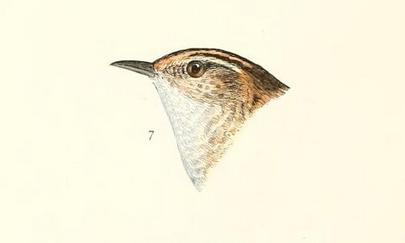It’s that time of year, when the long-awaited blush of green in the treetops starts to drive the warbler watchers wacky.
I can’t count the number of times during this Biggest Week that I’ve heard the old complaint: Why do all these warbler-colored, warbler-sized, warbler-shaped leaves have to come out just when the birds arrive? Just a few weeks ago, we couldn’t wait for the skeletal twigs of winter to burst their buds, and now, what we wouldn’t give for a bare branch or two up there where all that tantalizing buzzing and trilling is going on. If only the blasted habitat wouldn’t get in the way!
Plus ça change….
Félix de Azara, who celebrates his 169th birthday today (how time flies!), experienced similar frustrations in the twenty years he spent wandering South America.
One little Paraguayan bird in particular gave Azara fits:
It keeps to cover in tall vegetation, where it hides, coming out only when you are about to step on it; then it flies away a hundred yards or so, and if you chase after it, you’re amazed to find that it has already escaped to an even greater distance…. It is a restless, shy bird.
Azara says — good Euro-colonialist that he was — that
this bird has no name of its own, and I have given it the name of “todo-vox,” because of its song.
Hardly there in the flesh, as it darts from one reedy covert to the next, the bird is “all song,” nothing but voice — like all those disembodied chips and chirps raining down on us from the trees right now.
[Azara’s sneaky brown bird was a sedge wren, Cistothorus platensis polyglottus.]


